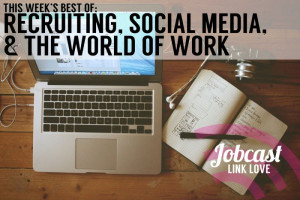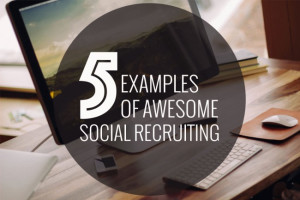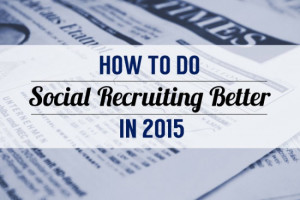Candidate-matching is basically alchemy… Except that it actually exists in real life! The ability to match qualified candidates to the right job with the click of a mouse would revolutionize hiring in a way we haven’t seen since the introduction of online job boards. Imagine never having to sort through stacks of junk resumes again. Imagine submitting a job description to an online job board and instantly being connected to 10 qualified candidates. Now imagine what you would pay for a tool that makes this dream a reality. This is why every job board and HR tech company is chomping at the bit to offer effective candidate-matching tools. Many have tried, but for the most part, haven’t delivered, because effective matching technology is extremely difficult to develop. Even Amazon.com’s lauded recommendations are assisted by Mechanical Turks (humans that help machines perform tasks for which they are not suited.) If tech giant Amazon needs humans to help match their customers with the products they desire, then what chance does HR have at succeeding with candidate-matching?! According to companies like Zao, Elevated Careers, and BCjobs.ca, the odds are actually pretty good. HR tech may not have the money and genius that Amazon has, but what they do have is a much more specific data set to analyze, as well as a much more narrowly defined goal. Over the past year we’ve begun to see real breakthroughs in the way HR technology is using big data to solve the candidate-matching problem, and it looks like we’ll be seeing more shortly. Social media is already providing recruiters with a host of incredible tools to improve the hiring process. Companies like Zao are betting on the social graph to provide the next big advancement in candidate-matching. In their case, they run a traditional referral program with a uniquely social twist. Zao’s software accesses your employees’ social profiles, then sifts through their networks to discover which of their connections are a good fit for your company’s open jobs. Employees are then prompted by Zao’s software to reach out and make a referral. Zao claims that this automates and simplifies the referral process, which makes it easier for both employees and employers. It’s a little outside-of-the box and requires your employees to permit a serious amount of access to their personal social networks, but Zao’s matching technology is worth checking out. A more traditional solution to candidate-matching is soon to be released by Canadian job board BCjobs.ca. BCjobs.ca uses all the information gathered from resumes, applications, profiles and user behavior, both from employers and job seekers, to match candidates to specific jobs. This means that when an employer posts a new job ad on BCjobs.ca, the service will immediately connect them with the 10 most qualified candidates for the job. BCjobs.ca’s matching tool not only makes hiring easier by suggesting top talent, but it also prevents employers from missing out on qualified candidates who do not apply for their job posts. Another exciting candidate-matching service on the horizon is Elevated Careers.
Elevated Careers is the latest project from the matchmaking experts of eHarmony.com. Between 2000 and 2012, eHarmony was responsible for 600, 000 marriages. Even more impressive is their scant 3.8% divorce rate. CEO Neil Clark Warren hopes that Elevate Careers will do for retention rates what eHarmony has done for divorce rates. We’re excited to see if their candidate-matching tool can deliver on improving retention rates for employers and helping job seekers find fulfilling careers.
Read More








